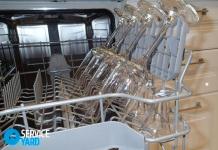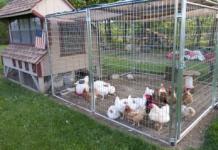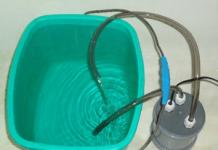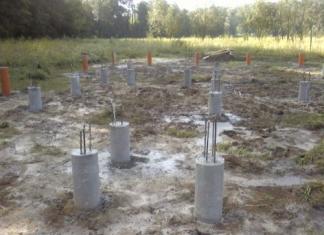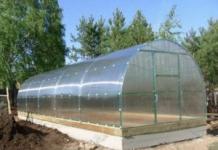The word "eustoma" literally translates from Latin as "beautiful mouth" or "beautifully speaking". The magnificent flower has several other names that are used in different countries and regions: lisianthus (Lisianthus - bitter flower), Texas bluebell, Irish or Japanese rose.
The houseplant eustoma, a photo of which can often be seen on the covers of floriculture publications, belongs to the Gentian family. It is believed that eustoma is a native of the southern regions of North America, the northern regions of South America, the Caribbean islands and Mexico. The American Indians have a legend that tells that for the first time this flower bloomed on the grave of an innocent girl who fell victim to the spirit of war. The proud beauty refused to become his lover.
For Europeans, eustoma was discovered by the Irish botanist and physician Patrick Brown. It is popular among flower growers as a cut flower, since eustoma can stand in a vase with water for up to twenty days, and as an ornamental plant for indoor cultivation. In the latter form, the flower has been cultivated since the mid-twenties of the last century.
Many flower growers dream of indoor eustoma blooming in their house. Growing and caring for this plant raises many questions even among experienced flower lovers. In this article, we will try to answer them. Today there are more than sixty species of this plant, which are divided into several conditional groups.

Growing type:
- tall eustomas, which are most often planted in the garden and in home gardens;
- low-growing varieties are suitable for indoor cultivation.
According to the duration of the growing season:
- annuals are suitable for hobbyists as they are easier to grow;
- two-year - for professionals;
- perennial varieties do not exist.
Flower type:
- simple;
- terry.
plant description
Eustoma has strong stems that can reach a meter in height in open ground. At the same time, they are very elegant, like a carnation. Almost from the middle, the stems begin to branch, turning into a whole bouquet of up to 35 buds that bloom alternately.
Eustoma leaves are lanceolate-oval, matte, as if waxy, painted in a bluish or grayish hue. The calyx is deep and large, funnel-shaped. Flowers can be double and simple (depending on the variety), painted in various shades - lilac, pink, purple, white, plain or with a bright contrasting border.
When the bud is half open, it is very reminiscent of a rose, when the flower is fully opened, it becomes like a magnificent double poppy. Under natural conditions, eustoma is a biennial plant, in garden cultivation it is usually annual.

Growing Features
- eustoma needs bright but diffused light;
- the plant needs a soil consisting of equal parts of humus and peat;
- eustoma propagates by seeds, since the cuttings do not germinate, moreover, the very fragile root system does not tolerate division;
- watering the plant should be carried out only after the soil dries two centimeters deep;
- do not transplant eustoma: its roots will not tolerate transplantation;
- room eustoma, the photo of which you see below, blooms better in a well-ventilated room.
Growing from seeds
A rather capricious plant is indoor eustoma. Growing and caring for it is a rather painstaking task that takes time. Nevertheless, for those who master the difficult process, it will bring real pleasure. Indoor at home grow their seeds, which are desirable to purchase in a specialized store. The complexity of this process lies in the fact that the seeds of eustoma are very small: in one gram they contain 23 thousand pieces. Seeds purchased in the store are processed using a special technology to increase germination.

Eustoma room: cultivation and care
Sow seeds at home should be in the first half of December. If you do this at this time, then by the end of August you will have blooming buds that you cannot take your eyes off. Disposable cups are used for planting. The substrate should be loose, with a peat component. Soil with the addition of coconut is excellent.
Seeds are laid out on the surface of the soil, which is pre-watered and then sprayed. After that, the cups should be covered with foil and transferred to a warm place (+25 °C). Once a day, the film is removed for a few minutes for ventilation, and the earth is moistened. After one and a half to two weeks, room eustoma gives the first shoots. Growing and caring from this point on becomes more complicated.

The film is removed, and a lamp is installed above the young shoots at a height of no more than 35 cm. When the seedlings reach 15 cm in height, they can be planted in permanent containers. For this, a ceramic pot is suitable. At the bottom, a layer of 3-4 cm spread drainage (expanded clay). Then the container is filled with soil mixture, without filling it up to the top edge by three centimeters.
Care
The eustoma flower covered with numerous flowers and buds is very beautiful. Home care for him is not an easy task for one reason: the plant is in dire need of diffused bright light and fresh air. This need can be met by placing a eustoma pot on an east or west window in a room that can maintain a temperature of +19-22 ° C, with regular ventilation.
It is impossible to spray eustoma, as this can provoke leaf diseases. During the period of bud formation and intensive eustoma, they are fed with complex liquid fertilizers, at the rate of 10 ml per 10 liters of water. It is necessary to remove wilted flowers from the plant in time. Follow these simple rules, and eustoma will delight you in ninety days with repeated flowering.

Watering
These indoor flowers do not tolerate overdrying of the soil at all. Eustoma, which home care involves regular watering, is also afraid of waterlogging, so the soil should be moistened only after the top layer has dried. The plant is watered under the root, trying not to get water on the leaves, at a cool temperature this can cause fungal diseases.
Temperature
For growing Lisianthus, the optimum day temperature is +20-25 ° C, and at night - no more than +15 ° C. If possible, in winter the flower is transferred to a room with a temperature of +10 ° C.
Secrets of flowering
Often, novice flower growers are interested in why room eustoma blooms weakly? Growing and caring for this magnificent plant holds some secrets:
- a few minutes after watering, drain the water from the pan;
- in order for the plant to bloom more abundantly, maintain the temperature regime necessary for it and ventilate the room more often;
- if pests are found on a flower, start treatment immediately to prevent their spread to other plants.
Care after flowering
When the eustoma fades, its stems must be cut so that no more than three internodes remain on them, and the plant is transferred to a cool room (+10 ° C). During the dormant period, the plant is rarely watered, and top dressing is completely stopped. In the spring, after the appearance of new shoots, transplant the eustoma very carefully (by transshipment) into a new nutrient soil and resume normal watering and care.

Indoor flowers eustoma (care): why does the ovary dry?
This question interests many flower growers. It would seem that all the rules for caring for the plant are observed, and it drops the ovary. There are several reasons for this phenomenon. Here are just a few of them.
- The plant stands in a draft. During ventilation, cold air can cause the buds to fall off, as well as the death of the leaves. At this time, the flower should be removed from the windowsill.
- Too cold water is used for irrigation: it should be settled, soft, at room temperature.
- You can not transplant the plant during the period when it has blossomed or gained buds. Even minimal, at first glance, damage to the root system causes stress, as a result of which not only the ovary falls, but also the flowers.
- Another reason may be low humidity in the room. To increase it, gently spray the air around the plant, avoiding moisture on the flowers and buds.
- With insufficient lighting, photosynthesis first slows down in the leaves, which ultimately leads to the fall of the buds. Sometimes, it seems that they are ready to bloom, but this does not happen.
- The ovary can dry even at high air temperatures in the room. Eustoma blooms and pleases with its beauty for a long time at an air temperature of +12 to +15 ° C.
- Pests can become the cause of the fall of the ovary: spider mites, whiteflies, thrips, scale insects.
Diseases and pests
Indoor eustoma is susceptible to fungal mosquitoes, which are dangerous distributors of fungal diseases, to fusarium wilt, to powdery mildew, gray rot. In the process of growing a plant, periodically carry out preventive spraying with special preparations. But if you still find pests, then do not delay the treatment. The following drugs are effective: Saprol, Topsin, Mospilan, Fitoverm, Confidor. Spraying produce 2-3 times.
As you can see, a rather whimsical plant is indoor eustoma. Growing and caring for it will require some effort from the owners, but believe me, you will be rewarded with excellent results when the eustoma blooms.
07 aug 2017
All summer long, a beauty blooms in my garden eustoma. This is a flower of extraordinary beauty with delicate satin petals, and a small stigma and yellow anthers are hidden in the center. The shape of eustoma flowers can be simple, when one row of petals creates a funnel, opening up, it looks like a poppy flower. The double flowers of eustoma are very beautiful, several rows of petals create a magnificent shape, like a rose.
The size of the eustoma flower reaches 5-7 cm in diameter, their color is of various shades of pink, yellow and purple, sometimes with a contrasting border along the edge of the petals.
Not only eustoma flowers look spectacular in any opening station, but also buds that have an elegant shape and thin sepals at the base. At the ends of the shoots, several flowers can immediately open, surrounded by buds, in a flower bed or in a pot, this plant looks like a lush bouquet.

Florists love to use eustoma to make bouquets, as the flowers of this plant stand in water for a long time, their delicate and luxurious look will decorate any celebration.
At the flower eustoma (Eustoma) there is another Latin name - lisianthus ( Lisiantus), many call this plant "Irish rose".
In culture, only one species is used - eustoma grandiflora ( E. grandiflorum) - this plant forms a lush bush of leafy shoots emerging from a rosette of basal leaves. The green of eustoma has a bluish-blue tint, as it is covered with a wax coating.
Eustoma grandiflora is grown in the garden as an annual or as a perennial plant. in a pot at home. This plant comes from the warm regions of Central America, therefore it does not tolerate negative temperatures and is not able to winter with us.
A large number of eustoma varieties have been created, differing not only in color and shape of flowers, but also in plant height. For cutting, eustoma is grown with stems growing to a length of 70-100 cm. For growing in the garden, choose flowers of medium height, 40-60 cm high, they will look good in the foreground in flower beds or containers.
If you want to grow eustoma at home, as an indoor flower, then dwarf plants that do not exceed a height of 25 cm are best suited for this purpose, such plants bloom quickly, short stems form a lush bush and do not require support.

Please note that the packaging of flower seeds always indicates not only the parameters of the plant, but also the duration of the growing season - an annual or a perennial. For example, the eustoma variety Mariachi Yellow F1, 70 cm high, is an annual, therefore it is suitable for planting in open ground and, when grown through seedlings, blooms as early as July. Perennial eustoma Rose Pink forms compact bushes up to 25 cm tall - this plant will take its rightful place among indoor flowers and is grown in pots.
Growing eustoma from seeds it is not an easy task, since the seeds of this plant are very small and in order for them to germinate, and small seedlings grow and grow stronger, for the first couple of months they need careful and proper care. My first experiments on growing eustoma from seeds were unsuccessful, then the seeds did not germinate, then the tender shoots died. Taking into account all the mistakes, for the third time, the eustoma seedlings, with proper care, came out well. After planting plants in open ground in early June, a month later, undersized varieties bloomed, and high eustoma blossomed at the end of July.
The lush flowering of eustoma lasted from mid-summer to autumn., and when planting plants in pots and keeping them at room conditions, the eustoma bloomed until winter. On one plant, up to 10 flowers bloomed at the same time and at least 10 more buds were formed.

Eustoma flowers last a long time after opening, they retain their color if they are not exposed to hot sun and water droplets. It has been noticed that at home, with bright diffused lighting, the eustoma flower, having bloomed, fades only after 2 weeks. Having opened in the garden, the flower lives less, but in the fresh air the plants grow faster, the shoots branch more strongly and more buds form.

How to grow eustoma from seeds
Eustoma can only be grown from seeds. The division of the bush for the propagation of this flower is not suitable, since if numerous thin roots are damaged, the plant gets sick and does not take root well.
When to sow eustoma
Eustoma blooms after sowing in about 5-6 months, therefore, if you want to enjoy the flowering of the "Irish rose" in the garden, then grow it through seedlings, sowing in January - late February. You can sow flowers for seedlings earlier, but the short daylight hours and dry hot atmosphere in the apartment are not suitable for the development of seedlings, so seedlings when sown in December or earlier in development by the time of planting are usually at the same level as plants sown in February .
For cultivation as an indoor flower, eustoma is recommended to be sown at the same time, since in summer the best conditions for flowering are created for plants.
How to sow eustoma seeds
Eustoma seeds very small, they are also called pulverized. When buying flower seeds from quality growers, the small seeds are enclosed in a light-colored shell that does not need to be soaked before sowing. It is convenient to sow small seeds in a light shell, maintaining a distance, with such sowing, the sprouts will not interfere with each other's development and it will be easy to swoop down.
For sowing, prepare small bowls and a loose nutrient substrate. You can make a substrate for growing eustoma yourself by mixing soddy soil, humus, peat and sand in equal parts.
Moisten and slightly compact the surface of the earth before sowing. At a distance of 3-5 cm, make small indentations of 2-3 mm and place the seeds there. From above, the seeds cannot be sprinkled in order to germinate, they must be in the light, and the shell on them can be dissolved by spraying the crops from above.

The sown seeds should always be in a warm, humid atmosphere. Cover the sown plates with glass or a transparent film and place on a bright, warm windowsill.
Crops can not be watered from above, the water will pull the seeds deep and they will not germinate. Moisten the earth by spraying its surface every day. At a temperature of +25 degrees, eustoma seeds will germinate in 1-2 weeks.

Eustoma care
Eustoma seedlings are very small, it seems that for the first month they hardly grow, four green leaves only slightly increase in size. During this period, a temperature of about +20 degrees is required for eustoma seedlings. Watering small seedlings should be very careful, from a spray bottle or from a pan. The earth in the bowl should always be slightly damp, but not damp. If the room is hot, the substrate will dry out quickly, and even if the earth dries out for a short time, tender shoots may die. To maintain moisture, you can cover the crops with a transparent bag, make small holes in it and ventilate it every day so that the surface of the earth does not become moldy.
The second important condition for the development of eustoma seedlings is lighting, it should be bright diffused and at least 12 hours a day. At the end of winter and the first months of spring, flower seedlings need to be illuminated with lamps in the morning and evening hours.

Visually, the first months it is not visible that the shoots of eustoma are growing, during this period the root system develops underground. When the first two pairs of true leaves are formed in plants, they can be distinguished by a bluish-blue hue, after about 2 months, eustoma seedlings dive from bowls into separate pots. When transplanting, take out plants with a clod of earth, you will see that many small roots have formed in small plants under the ground.

At the beginning of growth, eustoma tolerates picking well, shortened roots even begin to develop faster, but in the adult stage, eustoma painfully tolerates transplantation, so the seedlings are distributed in small cups or pots in which the plants will develop until the time of planting in a permanent place. From the pots, eustoma seedlings are planted by transshipment, removing the plant from the cup, without destroying the clod of earth and without damaging the root system.


Two months after germination and after picking, eustoma seedlings begin to grow by leaps and bounds. A lush basal rosette of leaves is formed and in May tall shoots will begin to grow from it. For the rapid growth of eustoma, regular top dressing is necessary.. Eustoma is fed every week, but fertilizer is diluted in water for irrigation half the norm. Water the flower seedlings as before regularly, not allowing the earth in the cups to dry out, in order not to flood the plants in the bottom of the cups, there should be drainage holes.

Planting eustoma in open ground and care.
Planting seedlings in the garden is carried out when the threat of frost has passed, in late May - early June. The plants are placed apart from each other in accordance with the height of the plants, after about 20-30 cm.
Before planting flowers, the earth is deeply dug up, complex mineral fertilizer and humus are applied. Eustoma loves fertile soil, but it must also be breathable, so heavy clay areas are not suitable for growing this flower.
Eustoma or Lisianthus is a flowering plant that is grown both in the garden and at home. She began to gain wide popularity among flower growers relatively recently. Exists a huge number of varieties of eustoma, differing in color, flower size and height of the bush.

The subtleties of growing and using eustoma (lisianthus)
|
1. For growing in the garden, varieties of the Echo or ABC series are best suited. And in a pot culture it is convenient to grow compact varieties of the Florida or Mermaid series. 2. Store-bought eustomas can also be tall varieties, but they are treated with special substances - retardants that inhibit growth, so they remain low. 3. In the open field, the plant is usually cultivated as an annual, although by its nature it is perennial. In temperate climates, eustoma does not always winter well. 4. Eustoma flowers for a long time (up to three weeks) retain freshness in the cut. Therefore, it is often used in the preparation of bouquets and is actively grown on an industrial scale for sale. 5. Lisianthus can be grown indoors throughout the year if you provide it with comfortable lighting conditions and the right temperature. A part of the stem with a flower is cut off, leaving two or more pairs of leaves on the lower part, after a while (about a month later) they give new shoots with flowers. |

The most spectacular, and therefore common among flower growers, is large-flowered eustoma or Russell's lisianthus. Her beautiful lush flowers-skirts on long peduncles are very good both in flower beds and in bouquets. The colors are very diverse: pale white with lilac edges, blue, pink, lilac, purple-red, purple, beige, light yellow. And this is not a complete list! Depending on the variety, the flowers may be terry and non-terry. The leaves of the plant are gray-green, covered with a light wax coating.
Also, depending on the variety, the plant can be large - up to 1.5 meters in height or miniature, from 12 cm, which is convenient for growing at home.
Eustoma blooms luxuriantly, about 20 flowers can form on one plant. Their size can be from 5 to 15 cm, and they bloom as they bloom gradually, therefore the flower bed retains its decorative effect for a long time.
Growing eustoma
The best time to plant eustoma in the ground is early July. They plant it with seedlings, it is better to use a purchased one, since growing your own is quite difficult (how to do this is described below). By the beginning of July, seedlings acquire sufficiently developed shoots and roots and take root in the best way. Just at this time, the plants are already beginning to bloom and continue to bloom almost until frost.

When planting in the garden, eustoma is placed in partial shade, direct sunlight is contraindicated for it. The distance between plants is 15 cm apart.
At the end of August, the shoots can be cut, leaving two pairs of leaves on the stumps, then at the end of September - beginning of October a new bloom will start.
Wintering eustoma or how to prolong her life
As mentioned above, eustoma is usually grown as an annual plant. However, if you want to save the eustoma bushes for the next year, you can dig them up, transplant them into pots and take them home for the winter. Some flower growers initially plant plants in pots and drop them in the summer in the garden, so that in the fall it would be more convenient to take them indoors.
True, the process of taking root indoor plants from open ground does not go smoothly, adaptation to a new place can take up to 1 month. With a sharp change in temperature from a cool street to a warm room, as well as a decrease in illumination, the plants begin to weaken and wither. Therefore, you need to start moving them indoors early, in late August - early September, when the temperature outside and at home is about the same. It is also advisable to place the plants first on a closed loggia, and only after some time in a room to give the eustoma time to get used to the lack of light. In addition to this, it is necessary to limit the watering regime until the plant gets used to the new conditions, it cannot absorb a large amount of water.

Some flower growers practice before transplanting into a pot, cut the bushes almost to the root and send them for the winter in this form. Often after such pruning on the plant root shoots are formed.
When taking plants from the garden, it is advisable to treat them from possible diseases and pests so as not to infect indoor flowers.
But even with long-term cultivation, after 4-5 years, you have to part with the plants, by this time fewer flowers begin to form on the Lisianthus, the flowers themselves become smaller, and sometimes the plants die altogether, despite good care.
Eustoma as a houseplant
If you want to grow eustoma as a houseplant, it is better to place it on an east or west window so that the scorching sun does not fall on it and try to move it closer to the glass to provide at least a small difference between day and night temperatures.
Usually at home, eustoma is grown as a "disposable" plant, after flowering it is thrown away, unless the task is to save the plant for later planting in the garden.
In general, the rules for growing eustoma in open and closed ground are almost the same.

Basic rules for caring for eustoma
Lighting
A lot of diffused light, plants need to be shaded from direct sunlight.
Watering
When grown in the garden, eustoma can tolerate heat and drought, although it certainly looks better with regular watering. When grown in pots, overdrying can kill the plant, moisture must always be present in the soil. At the same time, eustoma is afraid of waterlogging, so the next watering should be done only after the top layer of soil has dried.
When watering you need to be careful. Water the plant under the root and make sure that moisture does not get on the leaves, in cool weather, this can provoke fungal diseases. For the same reason, eustoma is not sprayed.
Temperature
The optimum temperature for growing Lisianthus is 20-25 degrees during the day, and about 15 degrees at night. In winter, if possible, you need to move the plant to a room with a temperature of 10-12 degrees.

Transfer
As a rule, plants are not transplanted, because Lisianthus has very fragile roots. If necessary, this can be done by transshipment, keeping the earthen ball in order to disturb the roots as little as possible.
top dressing
Eustoma is fed with complex fertilizer for the first time 10-14 days after planting in a permanent place, then, while active growth continues 2 times a month, and also during the period of bud formation and flowering, fertilizer for flowering plants.
reproduction
Vegetative propagation of eustoma almost impossible. Cuttings do not form roots, and when dividing a bush, plants with a high degree of probability will not be able to take root, because. roots are easily injured.

|
You can grow Lisianthus yourself from purchased seeds. It is unlikely that it will be possible to collect your own, since, as a rule, hybrids that do not produce seeds after flowering go on sale. Self-cultivation of eustoma from seeds is a long and time-consuming process, but many flower growers successfully cope with it. Lisianthus seeds are small, so they are sold in the form of granules. In addition, the special composition from which the granules are made improves germination. In general, eustoma seeds do not germinate very well. A germination rate of 60% is considered good. Sowing of seeds is carried out from January to March in light soil, well-permeable to air and moisture. At home, you can make it from garden soil, peat or vermiculite and sand in equal amounts. The earth is well soaked, the seeds are poured from above, without closing. Slightly pressed and sprayed with a spray bottle. Cover with a transparent film (package) and put in a warm (20-25 degrees) and bright place. If sowing is done in January-February, additional illumination will not be superfluous, ideally when the seeds receive light for 12-14 hours a day. It is also good if it is possible to transfer the container with planted seeds to a cool room with a temperature of 14-17 degrees at night. These are the recommendations of experts, but often, sharing their experience, flower growers say that they manage to grow eustoma seedlings without additional illumination and a nighttime drop in temperature. It has been noticed that with a later planting, in March-April, the plants give flower arrows earlier, but the rosette of leaves is formed worse and the bushes are less lush. About once a day, seedlings need to be ventilated. The soil must be kept moist by spraying. Shoots, looking like tiny dots, appear after about 2 weeks. After that, watering is significantly reduced and, if possible, the plants are transferred to a cool (14-17 degrees) place.
Further, the seedlings grow slowly, only after 1.5 months, when 2-3 pairs of true leaves appear, you can pick. In this case, eustoma is placed in separate small pots. For good branching, the tops of the seedlings are pinched when 3-4 pairs of leaves form on them, and after 3 months they, together with a clod of earth, are transplanted to a permanent place in the garden or in a separate pot for home maintenance. Landing in the garden can be done after the last frost, in the middle lane this is the end of May - the beginning of June. |
Eustoma or Lisianthus is a plant that belongs to the Gentian family. There are also popular names such as: Japanese rose, Irish rose, Texas bluebell, Chinese rose, rose without thorns.
General information
She came to us from the south of the continent of North America. The Indians have a legend about the origin of eustoma, which says that this flower appeared on the grave of a beautiful girl who refused to marry the Spirit of War, and he killed her for it.
This plant has strong shoots, reaching almost a meter in height. Starting from the middle, the shoot branches. Eustoma foliage is slightly bluish lanceolate matte. Funnel-shaped flowers, terry varieties are found. The colors are very different - white, purple, pink and other colors.
While the flower is not fully open, it looks a bit like a rose, which is why it is so often called a "rose", but when it is fully opened, it looks more like a poppy.
In the wild, this plant exists as a biennial, and cultivated species are usually grown as annuals. If you want to have a perennial eustoma, then this can only be done by growing it in a pot.
In general, there are about sixty species of eustoma, but only one species is grown as a houseplant - Russell's eustoma, and as a garden plant - large-flowered eustoma.
In culture, there are undersized varieties that grow up to half a meter and are grown in rooms or on balconies; and tall, which are used in gardening.

Eustoma landing and care at home
Growing eustoma, and especially indoors, is a rather difficult task. In order for the flower to be healthy and bloom at the same time, you must follow all the rules for caring for it.
First of all, eustoma needs strong diffused lighting and a warm temperature around 21 degrees. It is also important that the air does not stagnate, but is constantly ventilated.

Watering eustoma
You can water the plant only with settled water. The soil should not be too dry, but it should also not be waterlogged. Watering is best done when the earth dries a couple of centimeters deep.
The flower does not need spraying - they will only damage it.
During the growth of green mass and budding, the plant needs liquid complex top dressings (10 ml / 10 l bucket). Also, after flowering, sluggish flowers should be removed.

Transplant and soil for eustoma
A good substrate for the plant will be a mixture of rotted bark with peat in the same ratio.
Eustoma simply does not tolerate transplants. It is only formally considered perennial for indoor cultivation, but in fact it will die after an untimely procedure. Transplantation is allowed only after wintering and must be carried out very carefully.

Eustoma planting and care in the open field
To grow eustoma in the garden, at the end of spring, when you can be sure that there will be no more frosts, you need to plant it in a place where drafts will not reach the flower, and also make it drain. Lighting, as for a houseplant, needs strong, but diffused.
Eustoma should be planted in gloomy weather or in the evening. Pour a sufficient amount of water into the hole and place the seedling there along with the pot. Between specimens, a distance of at least 15 cm must be observed, since eustoma bushes.
15-20 days after disembarkation, hold the eustoma under the jar. During this period, you can stop watering the flower. With the advent of seven leaves, pinch the top of the plant to enhance branching.
30 days after planting, you can fertilize the flower with mineral dressing. In early summer, they use funds to enhance growth, and in August to enhance the formation of buds. It is advisable to dilute the funds stronger than indicated in the instructions.
If flowering ends too quickly, try cutting off any sluggish flowers - this may help induce new flowering in a month and a half.
Indoor eustoma after flowering should be cut off the shoots so that a pair of internodes is preserved. Then it is kept in a place with a temperature not higher than 15 degrees. Water the flower at this time rarely, it does not need top dressing.
In the spring, when new stems begin to appear, you need to be extremely careful, together with the ground, transplant the flower into new soil. They dig up eustoma from the garden and perform the same steps as for the room.

Eustoma growing from seeds at home
Reproduction of eustoma is possible only by seed, as the cuttings refuse to germinate, and the rhizome of the flower is so fragile that it cannot withstand division.
If you want to grow eustoma in the garden, then you need to sow it at the end of winter. Seeds just need to be poured onto the ground and slightly pressed on them. Cover the container with glass, but so that air can flow to the seeds.
The sown material needs a long light day - at least 11 hours, so you will need to use fitolamps.
The temperature must be maintained around 20 degrees during the day and not allowed to fall below 15 at night. The first couple of months, watering may not be required at all, and if you notice a lack of fluid, then just spray the seeds occasionally.
After about 15 days, the seeds will germinate. Immediately after that, they need to be sprayed with phytosporin and carry out this procedure from time to time in the future.
With the formation of two leaves, the plants dive into separate containers, and with the advent of heat, if you want, you can transplant them together with the ground into open soil.

Diseases and pests
For eustoma, various pests are dangerous. She can be hit slugs, whitefly if it's hot outside, it appears spider mite .
Cases of powdery mildew have also been reported, furaziosis and rot .
- Sometimes it happens that plant does not germinate . There may be two reasons for this - either you did not follow all the rules for growing a flower, or you received seeds with low germination.
- There is also a problem like yellowing of leaves in eustoma , moreover, even in seedlings of a flower. This usually happens if the acidity of the soil does not correspond to the desired one. For eustoma, acidity should be neutral.
This flower looks exquisite in florist compositions and window pots. It is called the Japanese or Irish grass rose, because the opening cups resemble the queen of flowers.
The name of the plant is eustoma or lisianthus (lisianthus). It belongs to the gentian family, from which it inherited an elongated corolla shape. A perennial crop in a cool climate is grown in rooms and greenhouses.
- seminal;
- with the help of cuttings;
- meristem.
- trays, cassettes or mini-greenhouses;
- spatula or ruler;
- fine spray gun;
- tags to designate varieties;
- backlight lamps;
- seedling fertilizer.
- dry soil;
- soaking;
- a sharp jump in temperature;
- deep sowing (the grain was under the surface of the substrate);
- stale seeds.
- low light leading to elongation of seedlings;
- overmoistening (provokes the development of fungi).
- 1. Raise the temperature. The permissible level is +24...+25 degrees.
- 2. Increase the length of the day, lighting up the seedlings for 19-20 hours.
- 3. Fertilize eustoma with fertilizer for flowering plants at intervals of 2-3 days. The dosage is calculated by reducing the recommended dose by 2-3 times.
Show all
Description and varieties
Rigid stems and leaves of eustoma with a bluish bloom resemble a perennial carnation. The difference lies in the size of the leaf plates - in Lisianthus they are wider. Branching can start from the ground itself or higher - depending on the variety and growing technology.
Flowers appear in racemes gradually. Each inflorescence contains from 5 to 25-30 buds. In simple forms - a 5-petal corolla, in terry ones it consists of 15 or more petals, the number of which is a multiple of 5. The shades are different - from plain white to dark purple with a color coating or border. The center is dark brown or light green.
Among the variety of varieties and hybrids of large-flowered eustoma (eustoma grandiflorum), there are 2 main types - undersized and tall.
Tall (cut)
Differ in a powerful habitus (bush shape). The most popular is ABC F1 - a series of semi-double and double eustomas 85-115 cm high. Flower size - 9-10 cm. Includes 18 colors divided into 3 groups - depending on the time of bud setting.

ABC F1 Rose Rim (Pink Rim)

ABC F1 Misty Blue

ABC F1 Yellow

ABC F1 Rose

ABC F1 Green

ABC F1 Blue
Avila (Avila) is valued for a friendly uniform flowering and a shorter growing period before cutting. Height - 90-115 cm, diameter - 7-8 cm.

Avila Purple (Purple)
Flare (Fleir) literally means "flash, shine, radiance." On tall (90-115 cm) slender bushes, lush semi-double cups of large flowers are formed.

Flare White (White Light)
Alissa F1 (Alice) - a hybrid 75-90 cm high. Each of the numerous petals has a fringed edge. Nine color variations will satisfy the requirements of the most demanding florists.

Alissa Champagne (Champagne)
Aube F1 (Dawn) has large buds with a multi-row arrangement of two-ton petals. Height - 80-90 cm.

Aube F1 Pink Picotee (Pink Border)
Borealis F1 (Borealis) is great for winter flowering. Bushes of 80-90 cm each bear hemispherical flowers of white, yellowish, pink, apricot and blue colors.

Borealis F1 Pink
Doublini F1 (Dublini) got its name from densely folded double flowers on the tops of the stems. Hardy series up to 80-90 cm tall.

Doublini F1 Blue
Echo F1 (Echo) - a time-tested eustoma with large semi-double flowers. Includes 6 clear and 2 tinted colors.

Echo F1 Lavender (Lavender)
Excalibur F1 (Excalibur). This name of the legendary sword is associated with courage and bravery. Plants are tolerant of high temperatures. Excellent leafy. Height - up to 100 cm.

Excalibur F1 Rose Pink

Excalibur F1 Yellow
Fioretti F1. Fioretti means many colors in Italian. Mini eustoma for boutonnieres and filling delicate bouquets in white and cream. The flowers look like little tulips. Bush - up to 1 m.

Fioretti F1 White
Mariachi F1 (Mariachi) - the famous series with four-sided full flowers, similar to camellias. 10 spectacular colors allow it to be used in plain and mixed floral arrangements.

Mariachi F1 Carmine (Carmine)
Mirage F1 (Mirage) feels great in the cool conditions of early spring or mid-autumn. Simple flowers up to 7-8 cm in diameter are decorated with crimson or blue border. Very elegant white variation with greenish buds. Height - 80-100 cm.

Mirage F1 Blue Rim (Blue Border)
Piccolo F1 (Piccolo) in Italian means "baby", which characterizes small flowers in compact racemes. The advantages of the series are long (up to 80 cm) stems and undemanding to lighting. Piccolo can be grown all year round using lamps in the winter.

Piccolo F1 Northern Lights

Piccolo F1 Milka (Lilac)
Robella F1 (Robella) - a variety with white, blue and pink shades of full lacy flowers. Excellent forcing by March 8: the series is designed for flowering in late winter and early spring. Temperature resistant.

Robella F1 Blue Flash
Rosanne F1 (Rosanne) - a unique eustoma. Its shades are combined with all colors and textures. Bright lemon, brown and chocolate colors fascinate.

Rosanna F1 Black Pearl (Black Pearl) in composition

Rosanna F1 Green (Green)

Rosanna F1 Deep Brown (Dark Brown)
Rosita F1 (Rosita) - medium-sized semi-double flowers. Dense petals and stiff stems ensure vase stability and excellent transportability. Represented by 29 species that belong to the 1st, 2nd and 3rd groups.

Rosita F1 Red (Red)

Rosita F1 Misty Pink

Rosita F1 Purple Rose
Arena F1 (Arena). Plants 0.8-1 m tall. Includes 17 shades of different flowering periods.

Arena F1 Light Pink
Advantage F1 (Adventage). The name "superiority" characterizes the series with 5 shades of semi-double colors. Height - 70-90 cm.

Advantage F1 Cherry Sorbet
Croma F1 (Kroma) forms dense neat flowers of 9 colors on 80 cm shoots. Versatile and transportable.

Croma F1 Silky White
Corelli F1 (Corelli) is named after the famous Italian violinist of the Baroque era. The characteristic features of the style - pomp and mass of decorations - are characteristic of large flowers on plants 80-100 cm. Each petal is decorated with curly fringed tips.

Super Magic F1 (Super Magic) - early plants. There are 12 shades of a flower of moderate size, the height of which is 0.7-0.9 m.

Super Magic F1 Deep Blue (Dark Blue)
Falda F1. The word "falda" is Spanish. Its translation - "skirt" - accurately conveys the shape of the wavy petals, which are folded into a corolla like a parrot tulip. Despite the large size, the series tolerates transportation well.

Falda F1 Salmon (Salmon)
Vulcan F1 (Volcano) looks attractive due to the large number of non-double flowers. The series contains 3 pure tones and 2 with bright borders ("picoties"). Height - up to 90 cm.

Vulcan F1 Pink Picotee (White with pink border)

Low (potted) eustoma
Compact bushes branch well at the base. The flowers are smaller than those of the tall Lisianthus, but cover the plant more abundantly.
Carmen F1 (Carmen) reaches only 15-25 cm in height. The series is resistant to fungal diseases. Available in 6 colors.

Carmen F1 Lilac (Lilac)
Rosie F1 (Rosie) attracts with double flowers. Height - up to 25 cm.

Rosie F1 Lavender Blue
Sapphire F1 (Sapphire) - miniature eustoma up to 15 cm tall. Most of its representatives bear simple flowers, and the Double White variety (Double White) is double white with a creamy tint.

Sapphire F1 Blue Chip

Sapphire F1 Double White
Florida F1 (Florida) was named for its ability to withstand hot climates. Thanks to this, flowering plants can be taken out into the garden for the summer and left outside until frost. Grows up to 25 cm.

Florida F1 Silver

Florida F1 Pink

cultivation
Eustoma breeding methods:
The most accessible method is seedling. Cuttings, even under optimal conditions, give a low percentage of rooting, and meristem culture requires special equipment.
Most Lisianthus series are hybrids. Material collected by one's own hands will not inherit maternal traits. Sometimes interesting specimens are obtained from such seeds, but more often the plants are inferior to the parent in many characteristics. Therefore, it is best to purchase material for growing eustoma in a professional store.
Necessary materials
It is quite possible to grow an Irish rose at home. According to flower growers, this process is long, but interesting.
Lisianthus develops very slowly in the first stage. At first, it gives small weak sprouts. Cotyledon leaves increase within 3-4 weeks after germination. At the same time, a fibrous system is slowly formed from the first 2-3 roots. The eustoma then releases true leaves.
Since it takes 2-3 months from sowing to the first transplant, the choice of soil is most responsibly. The flower loves light nutrient soils with good aeration (breathability) and neutral acidity at the level of 6.5-7.2. The best option is a peat substrate for sowing small seeds (fraction 0-5 mm) or the use of peat tablets if there are few seeds. The advantage of the material is the absence of insects and pathogens that cause great harm to small sprouts.
In addition to the substrate, you will need:

Peat tablets
Disembarkation time
Sowing time depends on the expected timing of flowering. Compliance with the conditions of agricultural technology allows you to see the first buds after 26-28 weeks from the start of work. With a winter culture, the period increases by 2-3 weeks, with a long day - it is reduced by 10-20 days.
For flowering in summer (June-July), eustoma is sown in November-December, and with sufficient additional illumination - in mid-January. If there are no lighting fixtures, it is better to plant by the end of winter, when the day begins to noticeably grow.
Sowing
Boxes or seedling cassettes should have a depth of at least 5-7 cm. Such container parameters will allow the root system to develop freely. Sowing in separate cells prevents injury to the roots during further picking.
Eustoma seeds are very small (more than 20,000 in 1 g). To facilitate the planting process, companies use a technique called panning. Each grain is rolled in with a special mixture, which additionally serves as protection against drying out. Dragee (pellets) can be painted white, yellow, green. Thanks to this technology, the seeds are clearly visible on the surface, it is convenient to adjust the sowing depth or automate the process.
Peas are picked up one by one on a toothpick or canape stick and placed at the sowing site. A few minutes after contact with moist soil, the shell soaks and does not create obstacles for germination. Hard dragees are carefully destroyed with the tip of a toothpick so as not to accidentally pick up a seed.
For manual sowing, the pellets are placed on a moistened substrate and pressed lightly. You do not need to sprinkle seeds on top: light is needed for germination.
Trays are placed in a warm room with a temperature of +21 degrees. The first days the drying of the soil is detrimental to the grains. To prevent it, the container is hermetically covered with a transparent film, plastic or glass.
Growing problems
If the conditions are not suitable for Lisianthus, a young bush begins to branch excessively, without forming full-fledged vertical shoots. This developmental pathology is called rosette. Discard any malformed seedlings.
For the prevention of rosette, too high (more than +25 degrees) and low temperatures are avoided. An effective method of preventing the disease is cooling containers with seeds at +5 ... +8 degrees for 3 weeks immediately after sowing. Then the trays are brought into a warm, but not hot place.
Waiting for shoots
Lisianthus germinates in 7-10 days. During this time, maintain a constant substrate moisture and temperature.
If eustoma does not rise, the reasons may be as follows:
Sometimes pipping occurs later - on the 12th or 20th day. Since the germination energy in this case is lower, the seedlings develop more weakly.
seedling care
Small seedlings have almost no roots. Instead, in the first days, you can notice a miniature white fork, which only after a few days will begin to grow and become fixed in the soil. Seedlings are watered very carefully. Use a spray bottle so as not to wash them.
At the beginning of development, Lisianthus does not need additional nutrition. The light regime must be optimal. Eustoma belongs to the cultures of the long day. Bright diffused light is turned on for 10 hours daily. For 8 weeks, the duration is gradually increased and adjusted to 18-20 hours.
2 weeks afterthe appearance of sprouts, the temperature is reduced to +17 ... +18 degrees. Start weak fertilizing with nitrogen-dominated fertilizer (every 3-4 days, 1-1.5 g / liter). Avoid at this stage:
picking
After 7 weeks of cultivation, plants should have 2 pairs of true leaves. They are planted in pots with a volume of 0.5-0.8 liters. The selection of soil is treated with special attention: the substrate will ensure further growth and flowering of the bush. To increase friability and moisture capacity, perlite is added to the soil.
Eustoma sown in boxes is dived into small cups or large cassettes. Make sure that the growing point is not below ground level.
Late picking causes twisting of the roots. This affects the survival and health of seedlings. In tall varieties, the stems do not gain the desired height.
Watering and fertilizing
The next day after transplanting, the eustoma is fed with a soluble phosphorus-containing fertilizer or root formation stimulator. A week later, they begin to give universal nutrition, avoiding an overdose.
Lisianthus is a plant of the American prairies. The lack of moisture will not have a harmful effect, and its excess is detrimental at any stage of development. Experienced flower growers conduct watering in the morning. To begin with, make sure that the top layer of soil (1-1.5 cm deep) is dry enough.
tweezing
This technique consists in pinching the top of the seedling when it reaches 8-10 cm in height. This stimulates the tillering of plants.
Dwarf series are genetically inclined to produce several side shoots at once. They are not pinched.
Budding and flowering
When the initial stages are behind, the appearance of buds at home can be accelerated. For this, several methods are used:
Moderate watering contributes to the formation of more saturated shades. At the first sign of disease, the affected parts of the lisianthus are removed and treated for insects or diseases.
Withered buds are removed along with the fruit. This stimulates the formation of new shoots and re-blooming after 1.5-2 months.
Summer period
With the onset of heat, the pots can be taken out into the street or planted eustoma in open ground. The more free space for the root system, the more magnificent the bush grows and gives more inflorescences.
The best place to land is a sunny flower bed with light shade during the hottest hours. In the sun in dry weather, leaves and delicate petals sometimes get burned. In the southern regions, frames are used, on which a mesh is pulled for a shade.
Seed collection
Lisianthus tends to set seed pods well. Each chamber contains hundreds of grains. This amount is enough to grow 250-300 seedlings. What characteristics the new copies will have is unknown.
The ovaries deplete the mother plant. It takes several months for the seeds to fully mature. All this time, the forces of the bush will be directed to the box instead of the formation of new buds.
Eustoma in winter
After summer flowering comes a period of short days. The bud-forming ability decreases, the lisianthus goes into a state of relative dormancy.
Plants in the ground will withstand frosts down to -5 degrees. When it gets cold, they will freeze. Individual instances are trying to save. To do this, they dig them in with a lump, protecting the roots as much as possible, and plant them in a pot. They contain a bush at a temperature of +8 ... +10 degrees. Some flower growers in advance, in the spring, plant eustoma in the ground along with the pot. In the fall, it is taken out and determined in a bright, cool place.
If there is enough light in the house, Lisianthus can vegetate for 2-3 years with short breaks between flowering waves. Care consists in timely top dressing and transshipment into a spacious container.
Diseases and pests
Indoor culture of eustoma requires constant attention. Inconsistency of conditions affects seedlings and often leads to irreversible consequences. A strong plant is resistant to attack by pests or infection by pathogenic microflora.

Gray rot (Botrytis)
A brief description of the problems and how to overcome them:
| signs | Cause | How to prevent / fight |
|---|---|---|
| Greyish wet spots. Affected parts die | Gray rot (Botrytis, Botrytis) | Follow the rules of care / "Ridomil Gold", reduce humidity |
| Brown stripes and spots | Late blight (Phytophtora) | Avoid stagnant water |
| White bloom, leaf curl | Powdery mildew (Mildew, Mildew) | Do not water in the evening / use water warmed to room temperature |
| Dark sunken spots at the base of the stem | Rhizoctonia (Rhizoctonia) | Treat with "Fundazol", remove infected parts |
| The plant withers, although the soil is wet | Fusarium (Fusarium) | Reduce watering. Sick bushes dig up and destroy with a lump |
| Small white moving flies | whitefly | Use glue traps. Treatment with preparations "Teppeki", "Admiral" |
The sooner the source of infection is detected, the easier it will be to eliminate it. Compliance with the conditions makes it possible to grow eustoma indoors in any region, including the Ural regions and Siberia.
Compositions with lisianthus
A well-groomed plant looks beautiful in a neat pot on a table or window. When choosing a place, make sure that there is enough light.
High series are more often grown for cutting. Eustoma flowers have excellent vase persistence - about 3 weeks.





